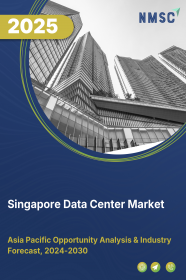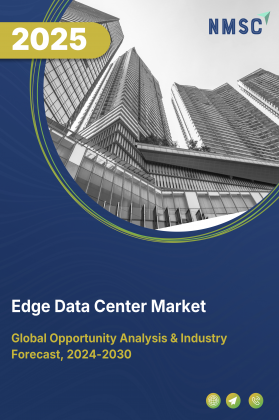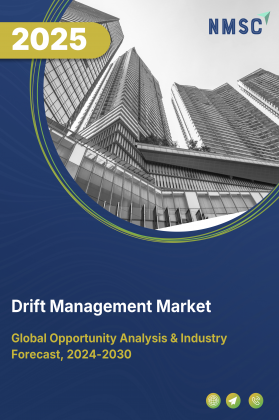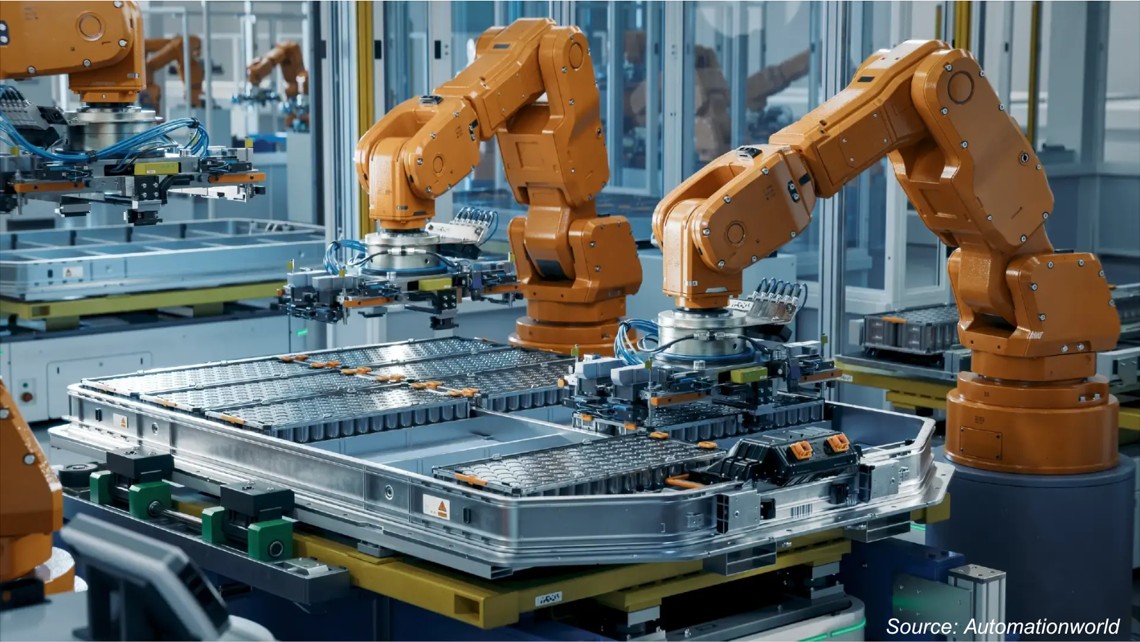
Singapore Data Center Market by Infrastructure (Hardware, Software, Services), by Type (Enterprise Data Centers, and others), by Data Center Rating (Tier I, and others), by Size (Small Data Centers, and others), by Power Capacity (<0.01 GW, 0.01-0.05 GW, 0.05-0.1 GW, 0.1-0.5 GW, and >0.5 GW), by Server Rack Density (<10kW, and others), by Data Center Redundancy (N+1, and others), by PUE Outlook (Less than 1.2, and others), and Others - Opportunity Analysis and Industry Forecast, 2024–2030
Industry: ICT & Media | Publish Date: 27-Oct-2025 | No of Pages: 145 | No. of Tables: 166 | No. of Figures: 111 | Format: PDF | Report Code : IC2443
Singapore Data Center Market Overview
The Singapore Data Center Market size was valued at USD 1.20 billion in 2023, and is predicted to reach USD 3.73 billion by 2030, at a CAGR of 17.6% from 2024 to 2030.
The data center market, also known as the network infrastructure market, covers the entire lifecycle of specialized infrastructure for hosting computing systems, from initial planning and construction to ongoing operation and maintenance. This market includes a variety of components such as servers, storage systems, and networking equipment, that together provide services such as cloud computing and connectivity solutions. Currently, the industry is experiencing widespread adoption of cloud services and the rise of edge computing aimed at reducing latency.
Key trends shaping the market include a strong emphasis on sustainability, increased cybersecurity concerns, the integration of hybrid and multi-cloud approaches, and the growing influence of 5G networks. These trends highlight the industry's proactive efforts to meet the rising demand for scalable, efficient, and secure data processing and storage solutions amid the ongoing digital transformation. According to projections by the United States International Trade Commission, the data processing and storage market is expected to grow from USD 56 billion in 2020 to USD 90 billion by 2025.
Sustainable Capacity Expansion Through Singapore’s Green Infrastructure Roadmap
Singapore is actively reshaping its data center growth strategy through a focused green infrastructure roadmap. With strict targets on energy and water efficiency, the country is prioritizing sustainable expansion over uncontrolled development. The roadmap mandates new facilities to achieve low Power Usage Effectiveness (PUE) and Water Usage Effectiveness (WUE), pushing developers to integrate next-generation energy-efficient technologies into their designs. These include innovative cooling systems, optimized energy usage, and smart infrastructure management to reduce environmental impact.
To support this transformation, Singapore has introduced financial incentives and regulatory support aimed at reducing the cost of sustainable data center development. Through funding programs and technology grants, both new and existing operators are encouraged to invest in eco-friendly upgrades such as liquid cooling, efficient UPS systems, and high-efficiency chillers. This strategy not only supports responsible capacity growth but also aligns with the nation’s long-term net-zero ambitions.
Strengthening Singapore’s Data Center Talent Pipeline and Edge Computing Ecosystem
Singapore’s Smart Nation vision has placed a strong emphasis on cultivating technical expertise in fields like AI, cloud computing, and digital infrastructure. Education programs and national training initiatives are building a skilled workforce capable of managing modern data center operations. This availability of high-quality technical talent is accelerating the deployment and operation of advanced compute platforms, supporting growing enterprise and AI-driven demand.
In parallel, Singapore is expanding its edge computing capabilities to meet rising demand for low-latency services. The deployment of micro-data centers near end-users is being driven by industry-specific needs in areas such as maritime, healthcare, and logistics. These edge nodes enhance data processing speeds and service reliability, reducing pressure on core facilities and supporting real-time applications across the economy.
Controlled Growth Via Singapore’s Moratorium Policy and Land Constraints
While the lifting of the data center moratorium has reopened the path for new developments, Singapore continues to regulate capacity growth through a tightly managed allocation system. Operators must apply for development quotas, which are granted based on their ability to meet energy efficiency benchmarks and contribute to the country’s green goals. This quota-based approach ensures that growth remains aligned with national sustainability and infrastructure priorities.
Land scarcity remains a major constraint for large-scale data center expansion. Urban space limitations and zoning restrictions challenge operators to innovate with vertical builds, modular designs, and retrofits of existing facilities. As a result, the market is evolving towards more compact, energy-efficient data centers that maximize space and utility without compromising performance.
Singapore’s Decarbonisation Drive and Financial Incentives for Green Data Centers
Singapore’s commitment to carbon neutrality is directly influencing the data center sector through policies that reward sustainability. The government provides co-funding for the adoption of energy-efficient technologies, enabling operators to reduce their environmental footprint while maintaining operational excellence. These financial incentives lower the barrier for both new market entrants and existing players to invest in greener infrastructure.
The push for decarbonization also involves stricter building codes and sustainability standards, encouraging operators to upgrade legacy facilities. Green-certified data centers not only meet regulatory expectations but also appeal to environmentally conscious clients. As the market shifts toward low-carbon operations, data center providers that prioritize innovation and efficiency are better positioned to secure future capacity approvals and long-term growth.
Decarbonisation Incentives and Green Equipment Subsidies
Singapore’s commitment to net-zero targets is opening new opportunities for data centre operators to invest in sustainable technologies. Recent government grant schemes offer co-funding for energy-efficient equipment and systems, allowing both SMEs and larger enterprises to improve power and water usage metrics. With stronger standards for green buildings and broader support for retrofitting and upgrading older facilities, operators can unlock additional capacity while aligning with evolving environmental regulations and market expectations.
Competitive Landscape
The key market players operating in the Singapore data center industry include Digital Realty, Equinix, AirTrunk, Singtel (Nxera), Keppel Data Centres, STT GDC, Princeton Digital Group, NTT Global Data Centers, Iron Mountain, Global Switch, 1‑Net Singapore Pte Ltd, Empyrion Digital, EdgeConneX, Telehouse Singapore, YTL Data Center Holdings.
Singapore Data Center Market Key Segments
By Infrastructure
-
Hardware
-
IT Hardware
-
Servers
-
Storage Systems
-
Networking Equipment
-
-
Power Infrastructure Hardware
-
Uninterruptible Power Supplies (UPS)
-
Generators
-
Automatic Transfer Switches
-
Power Distribution Units (PDUs)
-
-
Mechanical Infrastructure Hardware
-
Computer-Room Air Conditioners (CRAC/CRA Units)
-
Chillers
-
Racks
-
Cable Management Systems
-
-
Safety & Security Hardware
-
Fire Suppression Systems
-
Physical Security Systems (CCTV, access controls)
-
-
-
Software
-
DCIM & Monitoring
-
Automation & Orchestration
-
Backup & Disaster Recovery
-
Security Software
-
Virtualization Software
-
Analytics & Reporting Software
-
Other Software
-
-
Services
-
Planning & Professional Services
-
Site & Building Design
-
System/Infrastructure Engineering
-
Professional Advisory (compliance, energy audits)
-
-
Integration & Deployment Services
-
Electrical & Mechanical Installation
-
Commissioning & Acceptance Testing
-
-
Operation & Support Services
-
Preventive & Corrective Maintenance
-
Facilities Management / Remote Monitoring
-
Support Services (helpdesk, onsite SLA support)
-
-
Hosting & Managed Services
-
Colocation & Cloud Hosting Services
-
Virtual/Private Hosting Platforms
-
-
By Type
-
Enterprise Data Centers
-
Colocation Data Centers
-
Cloud Data Centers
-
Hyperscale Data Centers
-
Edge Data Centers
-
Micro Data Centers
-
Others
By Data Center Rating
-
Tier I
-
Tier II
-
Tier III
-
Tier IV
By Size
-
Small Data Centers
-
Med-sized Data Centers
-
Large Data Centers
By Power Capacity
-
<0.01 GW (Small)
-
0.01-0.05 GW (Medium)
-
0.05-0.1 GW (Large)
-
0.1-0.5 GW (Hyperscale)
-
>0.5 GW (Mega-campus)
By Server Rack Density
-
<10kW
-
10-19kW
-
20-29kW
-
30-39kW
-
40-49kW
-
>50kW
By Data Center Redundancy
-
N (No Redundancy)
-
N+1 (Single-fault tolerant)
-
N+2 (Dual-fault tolerant)
-
2N (Full duplication)
-
2N+1 (Concurrently maintainable + extra spare)
-
3N/2N+2 (Multi-backup fault tolerant)
By PUE Outlook
-
Less than 1.2
-
1.2 - 1.5
-
1.5 - 2.0
-
Greater than 2.0
By Design Outlook
-
Traditional
-
Containerized
-
Modular
By End User
-
Cloud Service Provider
-
Technology Provider
-
Telecom
-
Healthcare
-
BFSI
-
Retail & E-commerce
-
Entertainment & Media
-
Government
-
Energy
-
Others
Key Players
-
Digital Realty
-
Equinix
-
AirTrunk
-
Singtel (Nxera)
-
Keppel Data Centres
-
STT GDC
-
Princeton Digital Group
-
NTT Global Data Centers
-
Iron Mountain
-
Global Switch
-
1‑Net Singapore Pte Ltd
-
Empyrion Digital
-
EdgeConneX
-
Telehouse Singapore
-
YTL Data Center Holdings
Report Scope and Segmentation
|
Parameters |
Details |
|
Market Size in 2023 |
USD 1.20 Billion |
|
Revenue Forecast in 2030 |
USD 3.73 Billion |
|
Growth Rate |
CAGR of 17.6% from 2024 to 2030 |
|
Analysis Period |
2023–2030 |
|
Base Year Considered |
2023 |
|
Forecast Period |
2024–2030 |
|
Market Size Estimation |
Billion (USD) |
|
Growth Factors |
|
|
Companies Profiled |
15 |
|
Market Share |
Available for 10 companies |
|
Customization Scope |
Free customization (equivalent up to 80 working hours of analysts) after purchase. Addition or alteration to country, regional, and segment scope. |
|
Pricing and Purchase Options |
Avail customized purchase options to meet your exact research needs. |

















 Speak to Our Analyst
Speak to Our Analyst

























